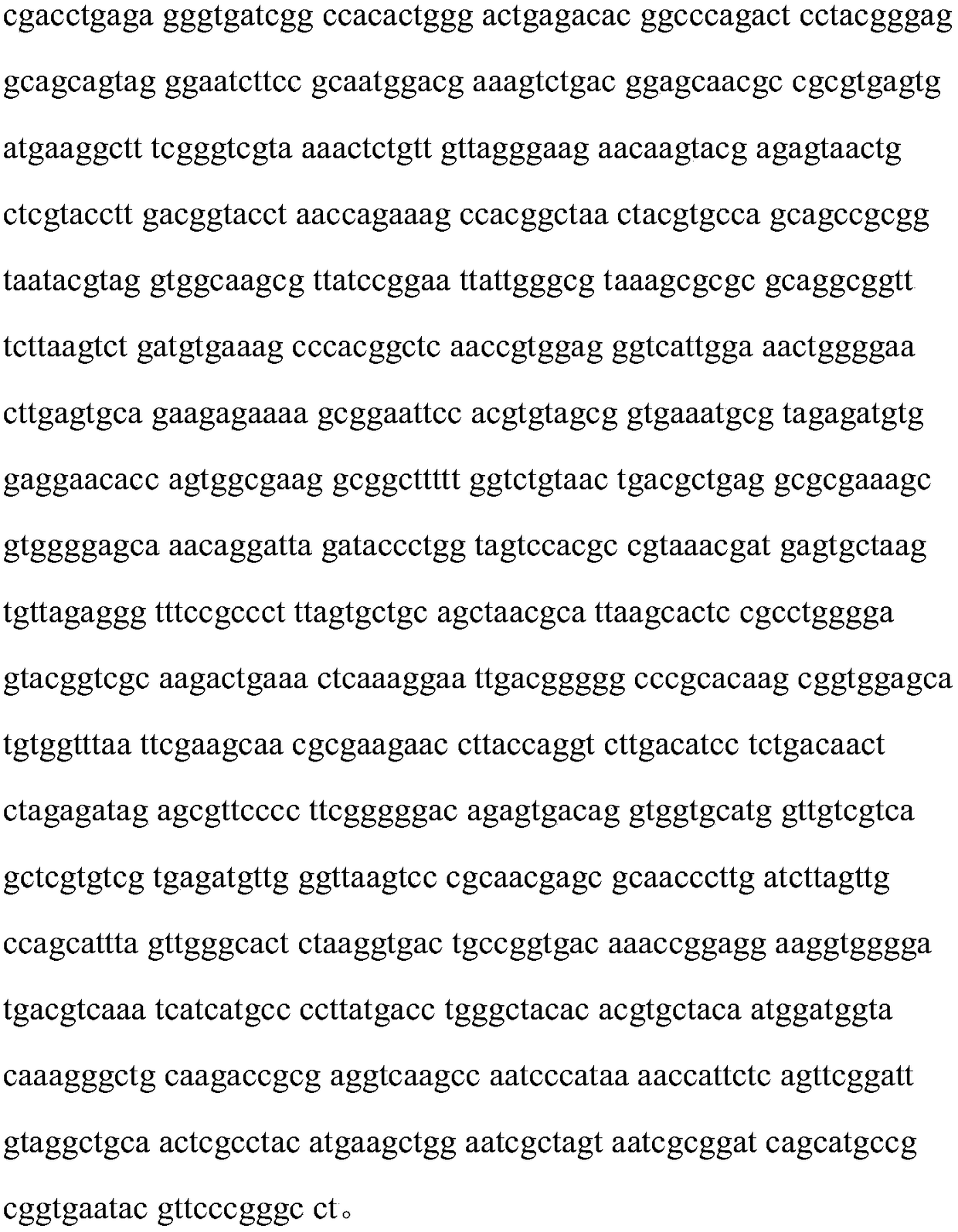Method for preparing flocculating agent by using Bacillus marinus
A marine bacillus and flocculant technology, which is applied in the field of preparing flocculants by using marine bacillus, can solve the problems of low polysaccharide flocculation activity and low polysaccharide yield, and achieve the effects of saving ethanol, simplifying separation steps, and reducing production costs
- Summary
- Abstract
- Description
- Claims
- Application Information
AI Technical Summary
Problems solved by technology
Method used
Image
Examples
Embodiment 1
[0029] The liquid medium includes the following components: glucose 13g / L, sucrose 8g / L, peptone 1.5g / L, sodium acetate 0.8g / L, yeast extract 0.7g / L, potassium dihydrogen phosphate 0.8g / L, and the balance is Aged sea water.
[0030] Solid medium: a slant medium prepared by adding 1.5% agar by weight of the liquid medium to the liquid medium and solidifying it.
[0031] The method for preparing flocculant by using marine bacillus comprises the following steps:
[0032] 1) Inoculate the marine Bacillus strain into the solid medium, culture at 27°C for 55 hours, and then add sterile water twice the volume of the solid medium to make a seed solution;
[0033] 2) inoculating the strain liquid into a liquid medium according to the inoculum size of 15% and carrying out fermentation and cultivation at 24° C. for 4 days to obtain a fermentation liquid;
[0034] 3) The flocculation carrier is added to the fermentation broth at a mass volume ratio of 0.45 g / ml, the pH is adjusted to 7....
Embodiment 2
[0039] The liquid medium includes the following components: glucose 11g / L, sucrose 6g / L, peptone 1.5g / L, sodium acetate 0.6g / L, yeast extract 0.7g / L, potassium dihydrogen phosphate 0.6g / L, and the balance is Aged sea water.
[0040] Solid medium: a slant medium prepared by adding 1.5% agar by weight of the liquid medium to the liquid medium and solidifying it.
[0041]The method for preparing flocculant by using marine bacillus comprises the following steps:
[0042] 1) Inoculate the marine Bacillus strain into a solid medium, culture it at 23°C for 52 hours, and then add sterile water 1.8 times the volume of the solid medium to make a seed solution;
[0043] 2) inoculating the strain liquid into a liquid medium according to the inoculum size of 13% and carrying out fermentation and cultivation at 24° C. for 4 days to obtain a fermentation liquid;
[0044] 3) The flocculation carrier is added into the fermentation broth at a mass volume ratio of 0.3 g / ml, the pH is adjusted ...
Embodiment 3
[0049] The liquid medium includes the following components: glucose 14g / L, sucrose 8g / L, peptone 1.5g / L, sodium acetate 0.8g / L, yeast extract 0.9g / L, potassium dihydrogen phosphate 0.8g / L, and the balance is Aged sea water.
[0050] Solid medium: a slant medium prepared by adding 1.5% agar by weight of the liquid medium to the liquid medium and solidifying it.
[0051] The method for preparing flocculant by using marine bacillus comprises the following steps:
[0052] 1) Inoculate the marine Bacillus strain into a solid medium, culture it at 28°C for 58 hours, and then add sterile water 2.5 times the volume of the solid medium to make a seed solution;
[0053] 2) inoculating the strain liquid into a liquid medium according to the inoculum size of 16% and carrying out fermentation and cultivation at 24° C. for 5 days to obtain a fermentation liquid;
[0054] 3) The flocculation carrier is added into the fermentation broth at a mass volume ratio of 0.4 g / ml, the pH is adjusted...
PUM
 Login to View More
Login to View More Abstract
Description
Claims
Application Information
 Login to View More
Login to View More - R&D
- Intellectual Property
- Life Sciences
- Materials
- Tech Scout
- Unparalleled Data Quality
- Higher Quality Content
- 60% Fewer Hallucinations
Browse by: Latest US Patents, China's latest patents, Technical Efficacy Thesaurus, Application Domain, Technology Topic, Popular Technical Reports.
© 2025 PatSnap. All rights reserved.Legal|Privacy policy|Modern Slavery Act Transparency Statement|Sitemap|About US| Contact US: help@patsnap.com


